An Overwhelming Concern with Shelter! (1966)
The International Dialogue on Experimental Architecture (IDEA) was held at New Metropole Arts Centre in Folkestone, Kent, 10–11 June 1966. The symposium was organised by Archigram and included contributions from Hans Hollein, Joe Weber, Yona Friedman, Cedric Price, Arthur Quarmsby, Anthony G. William and Reyner Banham.
The following text is the artist Gustav Metzger’s account of the proceedings. It is illustrated here largely with details of drawings from the Drawing Matter collection that date from the 1960s and 70s, and evidence the ‘overwhelming concern with shelter’ that Metzger describes.
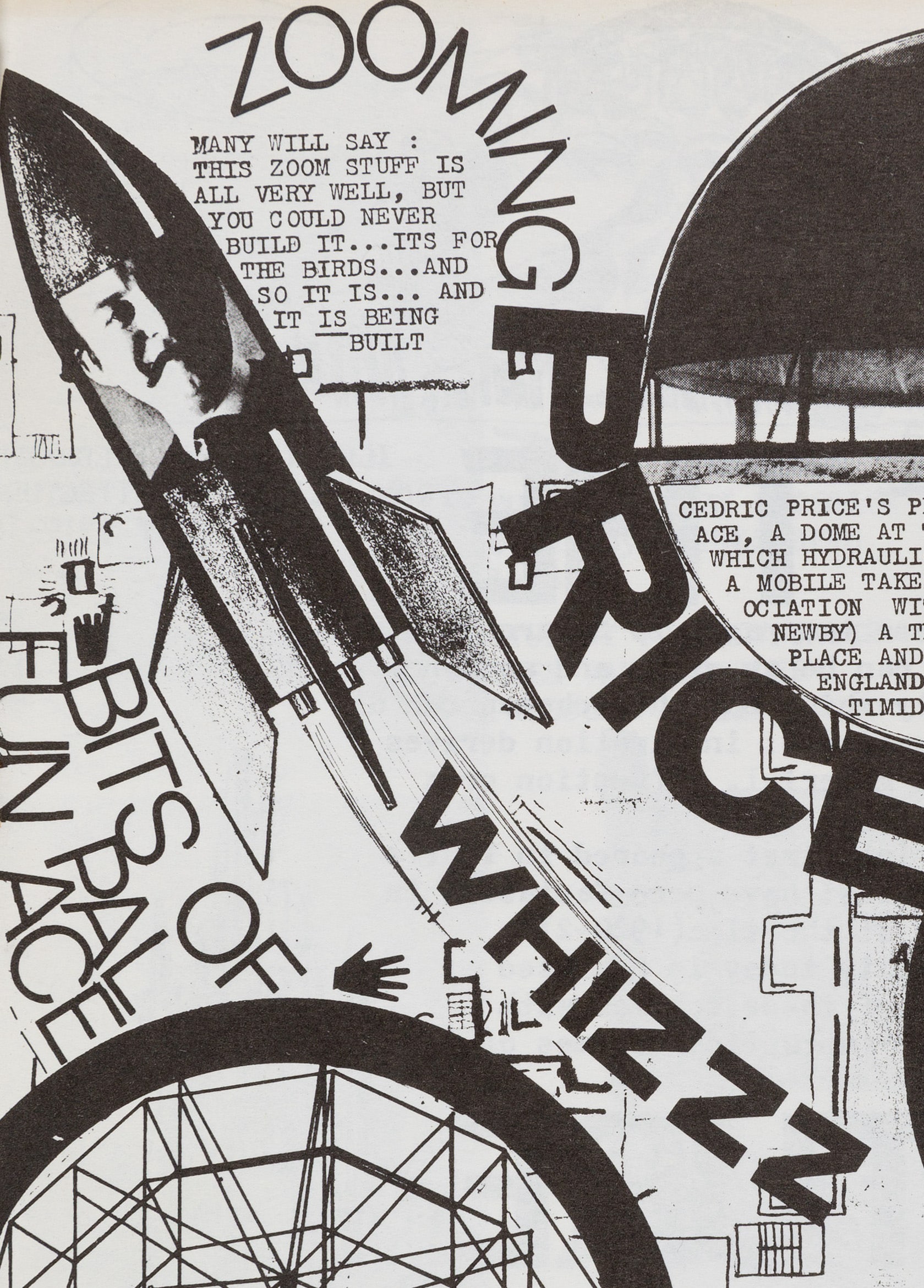
‘He’s great, he’s fabulous!’ Thus, with an expansive gesture like a compère at a pop show, Peter Cook introduced the first speaker, Cedric Price, and opened the IDEA seminar.
Pop records blared at the audience before the start of sessions, while the T-shirt-monogrammed organisers fussed over the rather inadequate amplification and projection systems. ‘Available at the boutique: copies of Archigram, New Society, Architectural Design, containing IDEA material. IDEA seaside rock. IDEA paper ties. Special experimental architecture seaside postcards. IDEA plastic clothing. IDEA T-shirt.’ ZOOM. WHAM. We were in the land of Archigram!
But even Reyner Banham, ‘the father of us all’, with is expendable quips, the whinny of his famed mini-bike noticeable in his delivery, and his Superman T-shirt (plus a couple of funny labels stuck to his lapel) could not hide the impression that pop – even in architecture – is most definitely on the way down.
What is Archigram? Started by a group in their twenties in 1960, the magazine, which has published six issues to date, has attracted considerable international attention. The International Dialogue of Experimental Architecture (IDEA) held at the New Metropole Arts Centre, Folkestone, on 10 and 11 June, and organised by Archigram with Derek Paul, marks a peak in the achievement of the group. This event, which included a large exhibition of photographs and models, was attended by over 600 people and addressed some of the most brilliant young European architects.
There was a great seriousness in the predominantly young audience. Intense discussion continued during breaks in the proceedings. The seminar proceedings consisted of ten sessions addressed by the architects with intervening periods designated ‘Dialogue’. These, according to the programmed, ‘will be interspersed with impromptu Happenings, films, etc. Contributions from the floor will be expected. We encourage as free and demonstrative contributions as possible.’
It is extremely difficult to give a remotely ‘objective’ account of what happened at Folkestone, since I became so involved in the discussion. Beginning with a critique of Archigram in the first morning, I developed in the course of the final ‘Dialogue’ a savage attack on the architects for failing to grapple with the reality of war. Several speakers had talked about the social responsibilities of architects: the needs of the under-developed countries, the responsibility of architects in allocating resources for the maximum benefit of human beings. I screamed: ‘You bastards! Don’t you realise that the “resources” that you are talking about are the resources left to you after the warfare state has appropriated whatever it wants. You are “allocating” the resources left to you after the state has skimmed off the best parts. You are talking about the surplus that is not required for the destruction of man!’
Maybe such a ‘free and demonstrative contribution’ was not anticipated, for at this point, white-shirted organisers moved in to extricate the mike from my hands, and when I turned to the table model, cut off the power! But from this point, speaker after speaker talked about war. This repressed subject floated up at last and began to dominate the proceedings.
Why is that architects, practising this central art of man, have not thought up the equivalent of the Bulletin of Atomic Scientists? Let me hazard a psychoanalytic explanation. If architects have a greater understanding than average need to relive the womb experience, spending their lives projecting shelters and enclosures, then it is not surprising that they have a greater than average difficulty in comprehending the bomb era, and adjusting to it.
Because of this overwhelming concern with shelter, architects find the exploration and understanding of a world where any shelter is likely to be shattered at a moment’s notice too traumatic an experience. This may be a major reason why architects have continued to practice without making serious and persistent efforts fully to come to grips with the complete transformation of their role in the atomic era.
In terms of form and structure, there are three extreme forms of response to threats of annihilation. One response is the is the design of entire cities underground. Some work in this direction has been published by Walter Pichler. The second response is particularly evident in recent American architecture. This is a tendency for minimal fenestration. The building is in the form of an enclosed block with rugged exterior (to surmount blast, and keep out radiation?).

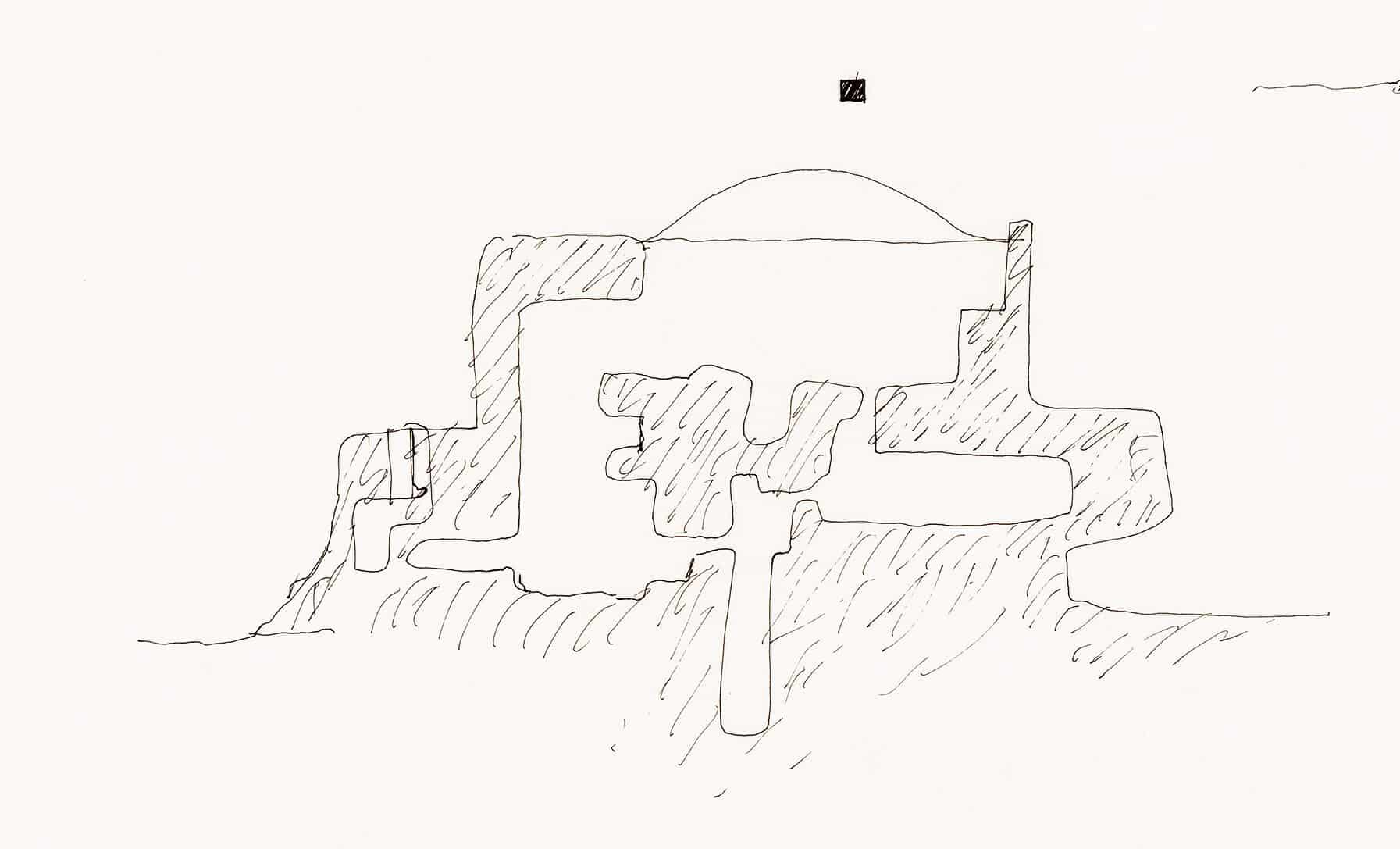
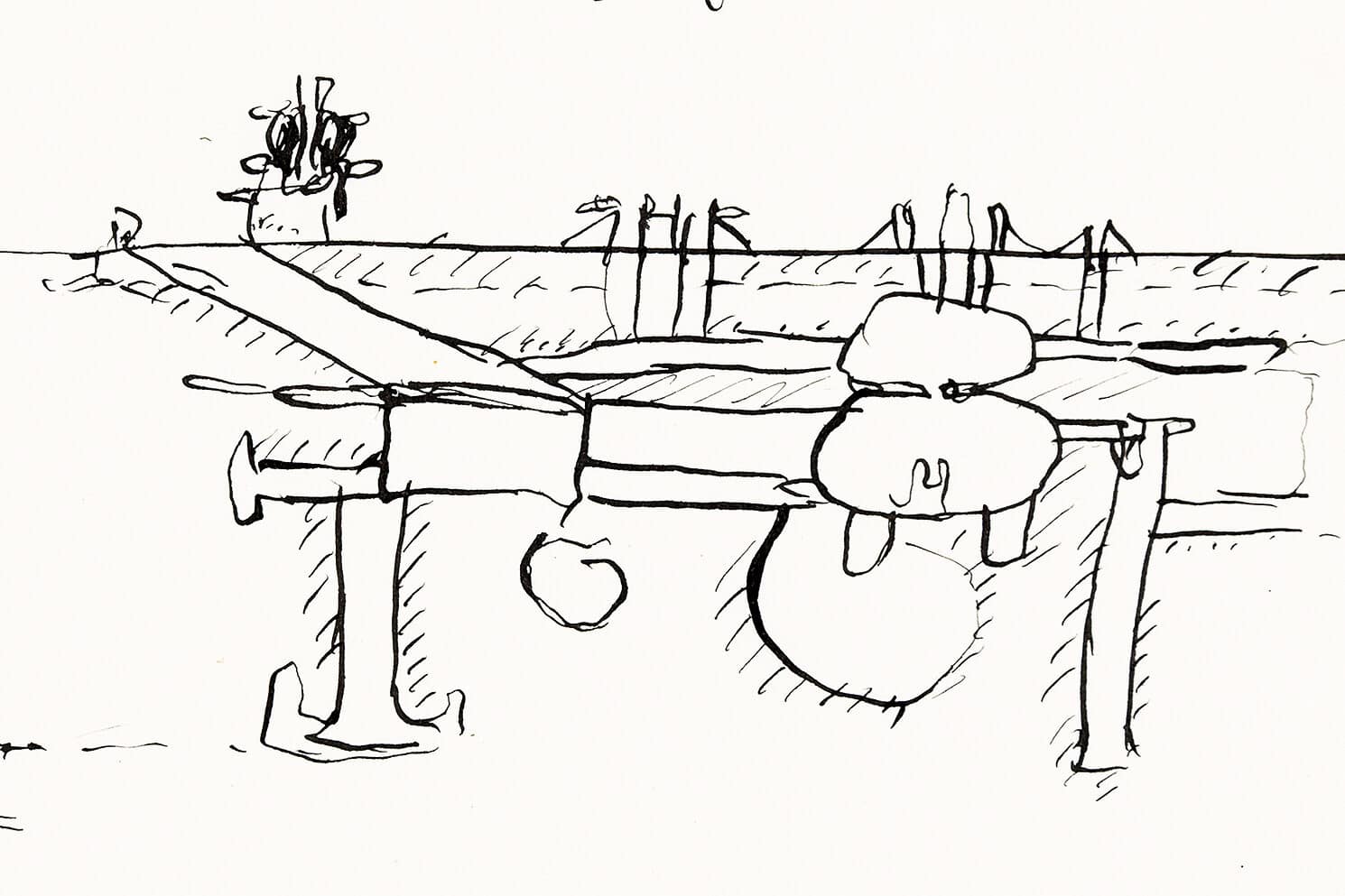
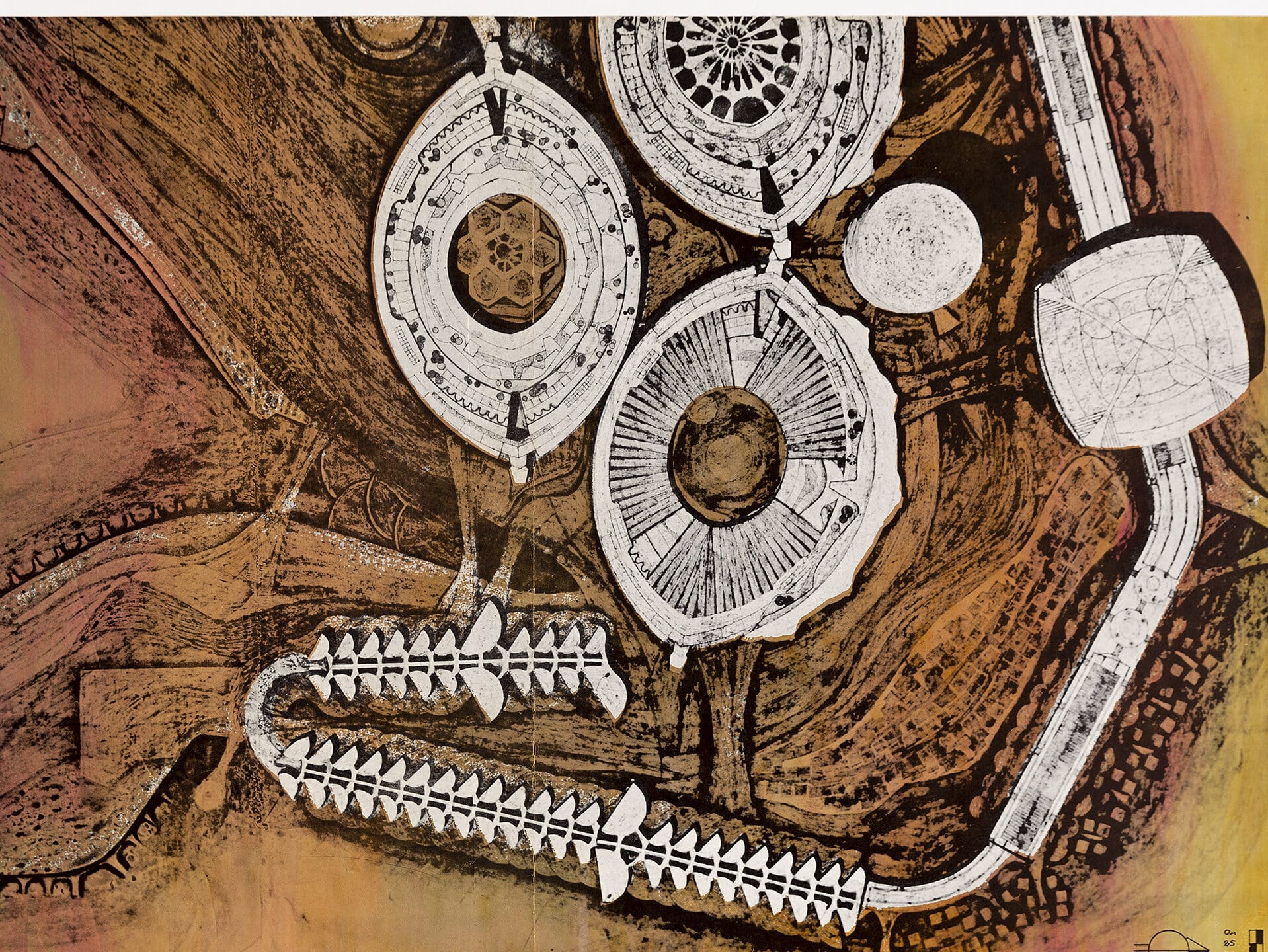

This response was illustrated at IDEA in Folkestone in a highly personal manner by Hans Hollein. He showed the project of a bank in a working-class district of Vienna. The most striking idea here is that the building can be walked on. Steps, paths, even vegetation and play areas, will be added onto this building. There are many excellent arguments for this development in architecture; Hollein showed other projects embodying this principle.
But here surely is an attempt to give maximum shelter to the building! Not merely in physical terms (the weight of the roof being greater than a normal building, was a corresponding increase in the weight-bearing capacity of walls, etc.), but by surmounting the the top and sides of the building with people, vegetation and other forms of life, the architect seems to be obeying an impulse to protect his building, i.e. his psyche, the best he can. He is using playing children, trees and strolling couples, to caress, penetrate, his building; using them as a sheath between the threatened annihilation and, in the sense of the psyche, protecting the building better than by turning it into a bomb-proof, unseen womb, deep in the earth.
The third extreme response was also evident at Folkestone: a concern with impermanent structures. Archigram has placed much emphasis on short-life architecture, and also the use of materials of the utmost fragility and deformative potential. The Huddersfield architect Quarmsby showed, in a series of slides of great beauty, the erection of a small experimental air structure.
Air structures are featured in the current issue of Archigram, they appear to be a response to the bomb which says, in effect, that the best answer to the destructive future are buildings that are impermanent anyway or that are malleable to blast and so have the greatest chance of survival.
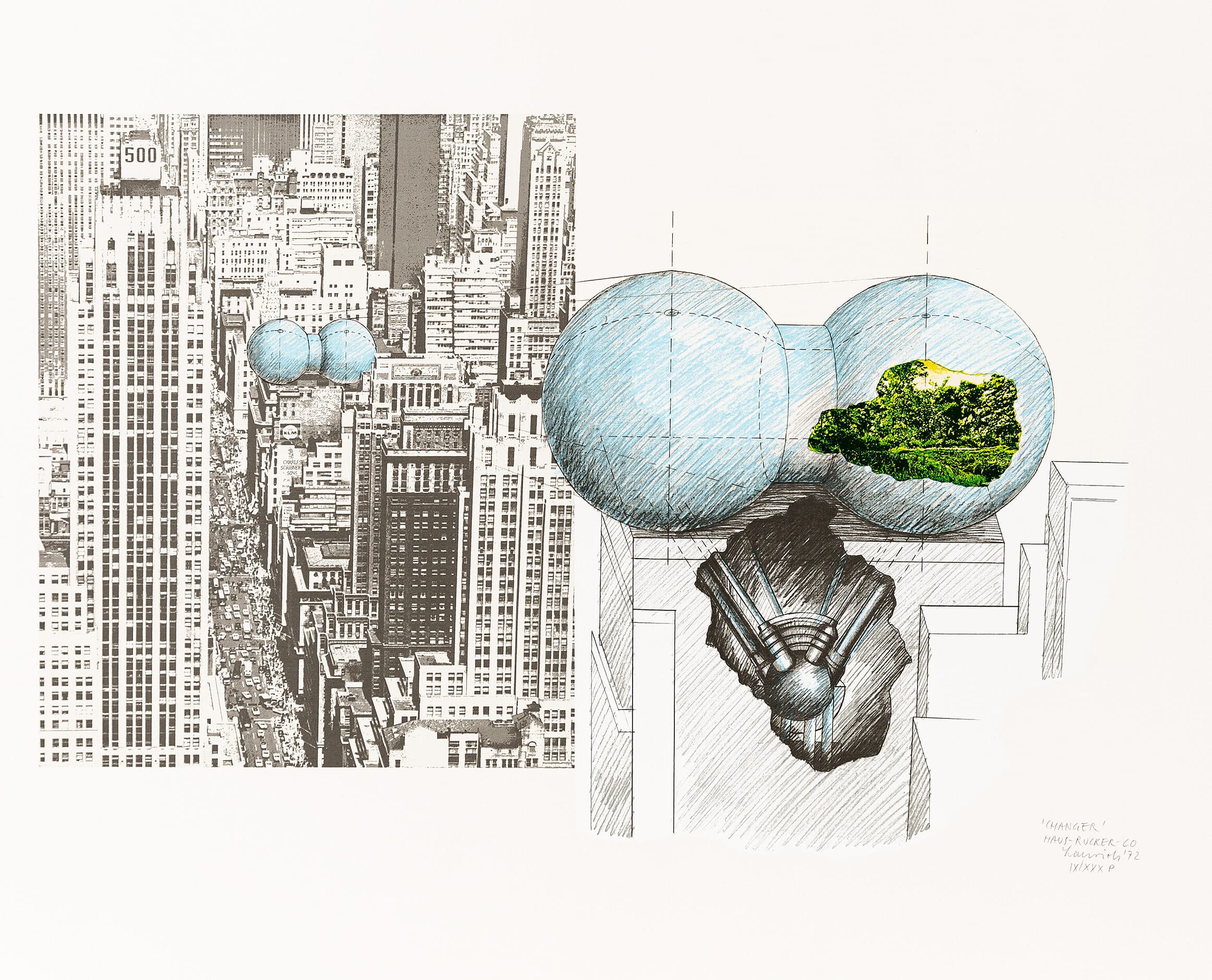
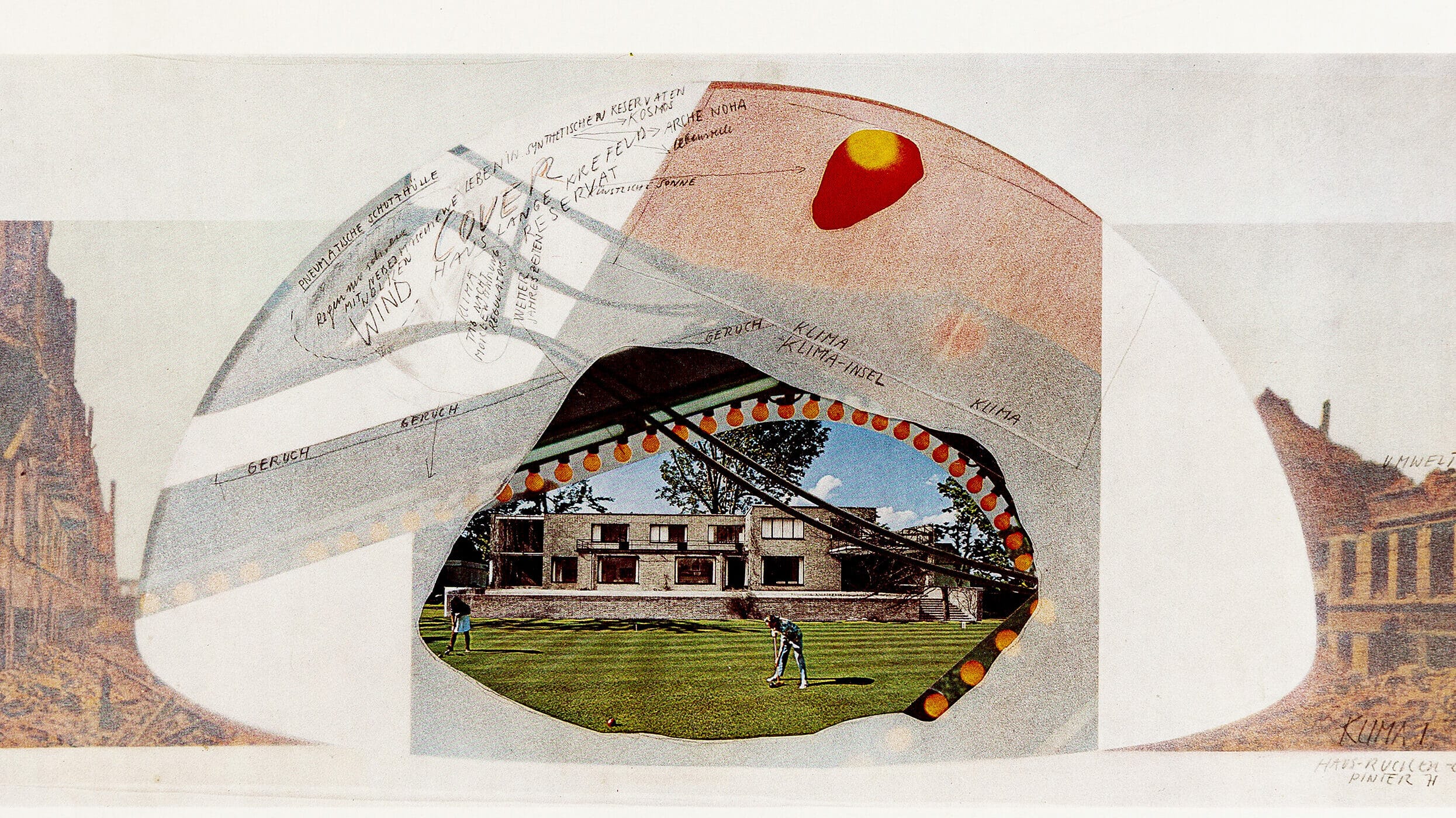
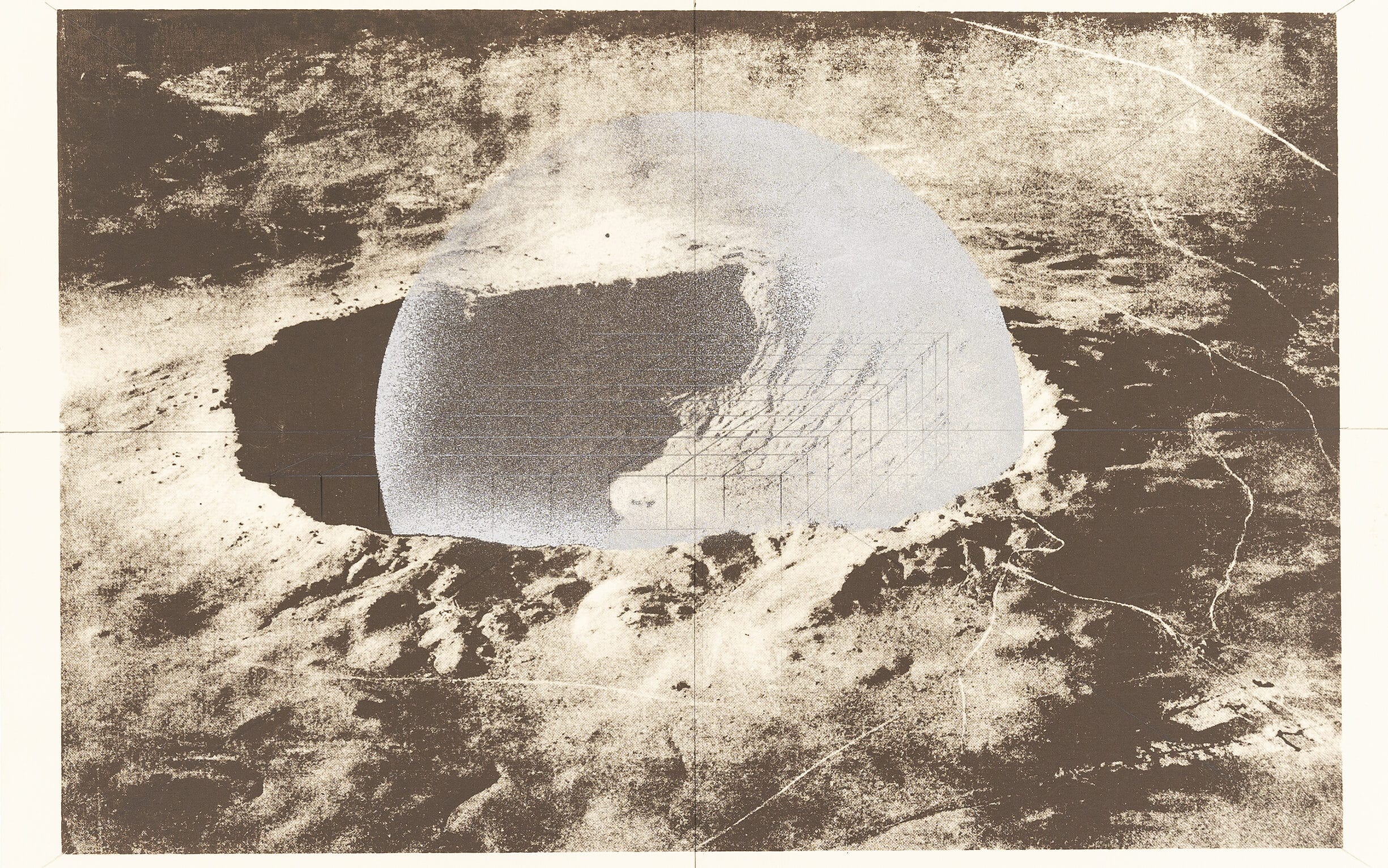
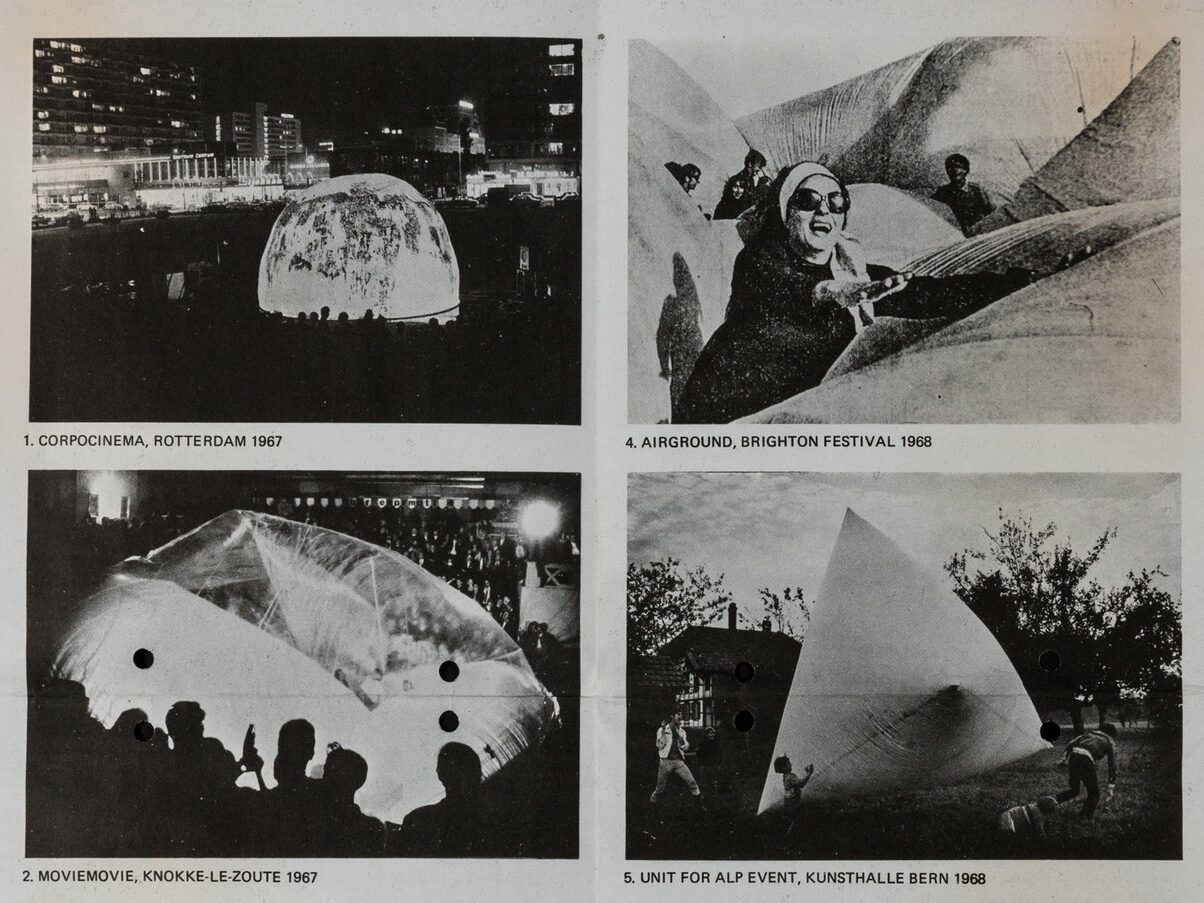
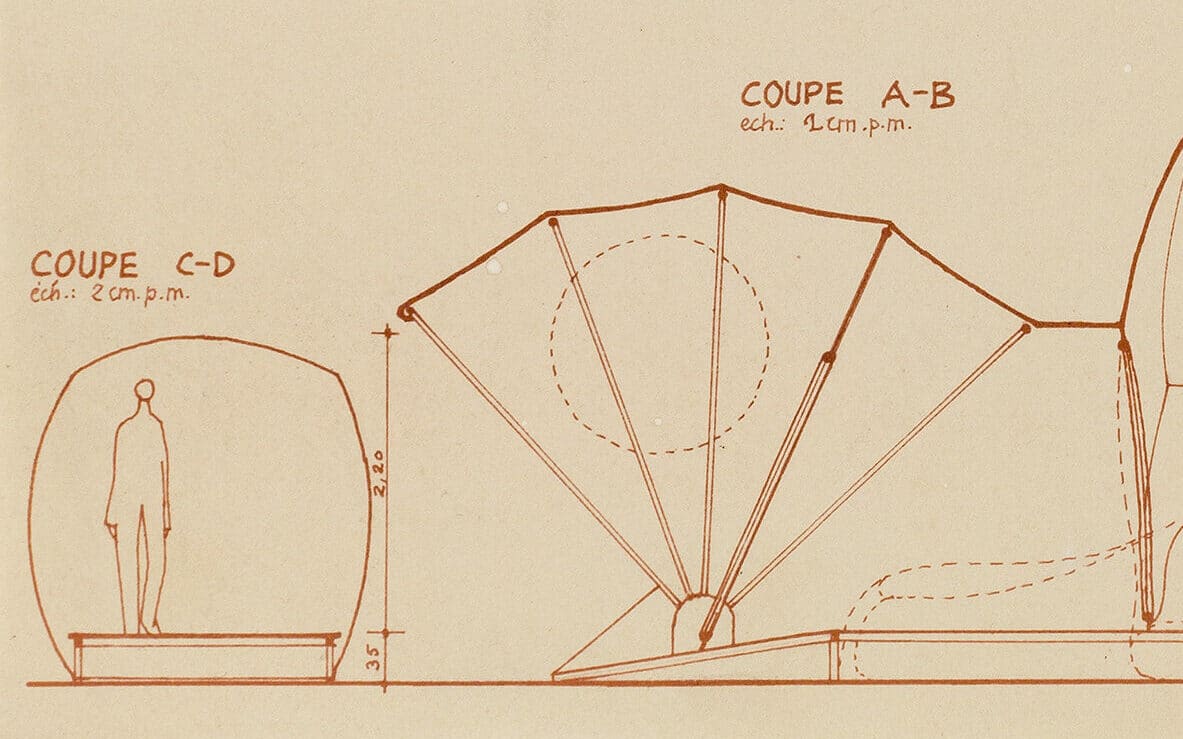
There is no doubt that architecture is a particularly sick profession. Architects continue to throw up multi-billion pound swindles, based on ideas of stability and permanence. They are not, of course, merely satisfying their own impulses, but also society’s need for reassurance about its future. But this is a state of schizophrenia which cannot continue indefinitely.
If architects are realistically engaged with an overwhelming need for shelter, they should devote themselves to making bomb and radiation-proof buildings, and take the more radical steps of publicly (as a profession) joining the struggle against war.
The first steps are to alert the profession of the new situation. A new journal is probably the most effective way. Architects who study the effects of atomic explosions on buildings, and produce projects that incorporate maximum protection against blast and radiation, will at least be contributing to a full discussion of the new reality. This will be the first stage of a battle to shatter the screen of evasion and ignorance prevailing in the profession.
The next stage will be in the form of large travelling exhibitions. Large-scale plans that provide the minimum requirements for life in a post-war environment. These plans should be worked out in the greatest detail with doctors and other specialists. Plans for public shelters, incorporating the entire range of safety facilities, can be produced, and can form part of the exhibitions. Another exhibition project would be the effect of explosives on buildings, There is no need to present these exhibitions as anti-war propaganda. They will probably have more impact if present cold.
‘The architect is not a universal man. I think that’s balls, frankly.’ (Peter Cook at IDEA.) Archigram presents man as another plug-in unit to be jammed into the Plug-in City. Just as the inhabitant of this utopia will be free to take out their capsule-home, by crane or helicopter, and have it plugged in a few miles higher or lower or maybe across the channel and, having got into a new site, then to re-arrange the standardised interior fittings, so too the inhabitants are seen as so many units to be slotted into an existing, pre-determined social and physical situation.
An analysis of Archigram would reveal a considerable contact with reality of the utmost complexity and disorder. Archigram, like all the architects at IDEA (the French group Architecture Principe, for example), is fighting for a way out of an impasse and is thereby adding to our knowledge and ability.
It is here that we can pin-point the marked sense of bafflement and frustration that was evident at Folkestone. We were presented, in the seminars and exhibitions, with a series of solutions to current tasks. These were presented within the framework of an obsolete order of ideas. Architects are trapped. They are expected to produce buildings as if nothing has happened. We live in a state of complete social breakdown, which has made architects redundant. There is one over-riding problem in a destroyed society (to argue that no bombs have dropped is facile evasion) and that is to find new bases for survival. There is not the time to go on exploring, refining, on the old bases. Anyone, regardless of his eminence or brilliance, who merely continues to solve problems in the framework of transmitted knowledge is literally undermining the future of man.
There is no doubt that a direction of thought which is concerned with a restructuring of our understanding of man’s past, and of his mental and technical developments, is becoming the most influential direction of our time; and only a most thorough restructuring of transmitted knowledge and skills can lead to an effective safeguarding of our future. Men in all parts of the world, and in different professions, are engaged. This work is in several stages,. The analysis of history from new standpoints is one. The restructuring of institutions and methods of manipulating matter is another. These, the most urgent problems of our time, are not even posed in our institutions of higher education.
In the sphere of science and technology this approach is especially interesting. Here and there are signs of the questioning of the bases of science. The scientific study of science is in fact the most important scientific activity now in progress. We can unravel the entire development of man from prehistory to the present in relation to the development of science and technology, by carrying out in the process a form of psychoanalysis of these activities. We no longer see the development of science and technology as something determined, but as the interaction of numerous events and conditions.
Science is an invention of man, and could have been – has been – invented in many different forms! We are in a position to foresee the invention of numerous forms of science and the technology. It is the decision as to which attitudes and premises these forms of science and technology are based on that will determine the future of man. We are a new breed of barbarians but we are very unlikely the barbarians of the past. The new barbarians will work will all the paraphernalia of the present. We will have access in our caves to all sorts of electronic toys like computers, access on tape and microfilm to a vast range of knowledge. Our task? The demolition of the framework which created the toys! The revolution which matters to our time will not take place at the point of a gun, but in the laboratories of dedicated, fanatical destroyers of ideas and values who, in order to save time, have managed to appropriate some of the tools of the oppressors in order turn them against themselves.
This necessary transformation of our understanding of science and technology will have a profound impact on all spheres of life, including the act and art of architecture.
Text © the Estate of Gustav Metzger 2017.
This text was originally published in Peace News, 2 September 1966, 5–6. It was reprinted in Gustav Metzger Writings 1953–2016, ed. Mathieu Copeland (JRP Editions, 2019), 182–7. Copies of the publication can be purchased, here.

– Erik Wegerhoff